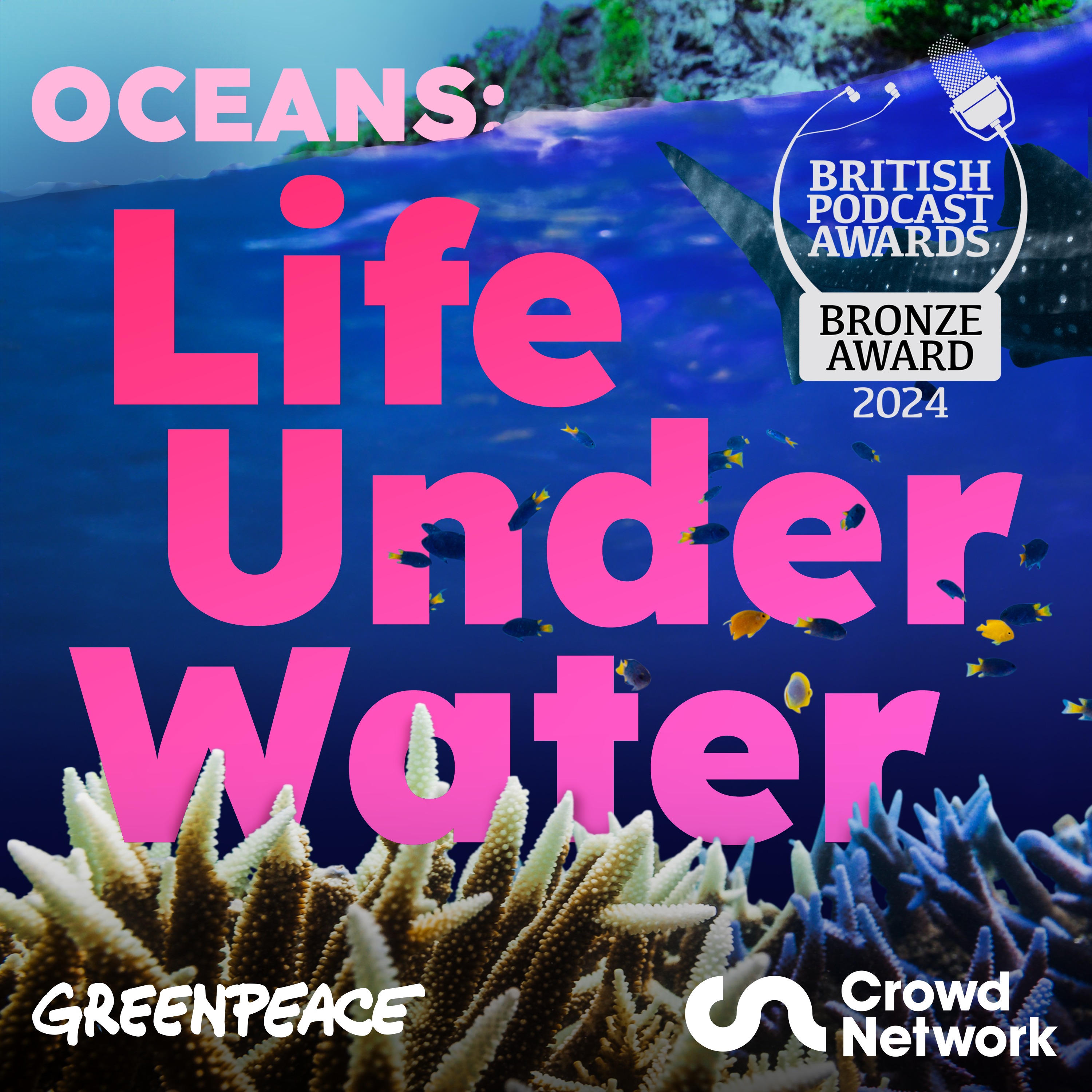
Deep Dive
Shownotes Transcript
Hey listeners, today we're sharing something a little different. A story that starts with an alligator, a deep sea robot and a mystery at the bottom of the ocean. It's from the podcast Oceans, Life Underwater, hosted by wildlife filmmaker Hannah Stipfel and made by Greenpeace and Crowd Network.
The series explores the hidden wonders of our oceans, but also the creatures, questions and survival strategies that exist far beneath the surface, in the parts of our world we rarely see. In this episode, scientists drop an alligator 2,000 metres into the deep. What do they find when they return? That's where things get strange. This is the deep ocean like you've never heard it before. Eerie, otherworldly and full of surprises.
Here comes the episode. You can listen to more of Ocean's Life Underwater Season 2 on Apple Podcasts or wherever you get your podcasts. So we started on the research ship. We're way offshore. The ocean is thousands of metres beneath the deck. And we put our robot in the ocean, this massive car-sized machine that's going to be our eyes and ears and hands in the deep.
But we've also clasped in its hand a dead alligator, which had never been done before. So we watched this alligator disappear down beneath the waves, this robot sinking down with it. And we waited until the cameras came on and we ran back into the control room and could look at the screens, which is the video coming up from this robot as it's sinking down into the deep.
And we can see that the water at first is green and there's light, but quite quickly it's getting darker. We can see the sunlight is running out all around it as it's sinking down and down. It took an hour for it to reach our destination, which was 2,000 metres down on the seabed, on the abyss. These abyssal plains, just big, undulating, muddy seabed. And we finally saw the robot landing down on the seabed.
And then we lay the alligator down on the seabed and we left it there.
And we came back. A day later, went back down. And we didn't know what we were going to see. It was really exciting. It's one of those things you just think, oh, you know, what could be? Will it just, will have anything found it? Will it be, will it be still there? And the camera panned around across the seabed. You know, just imagine that what you can see is as far as the lights can go. And there on the seabed is our alligator. It's still there. But it's been found.
And it's covered in these giant scavenging crustaceans called isopods, giant isopods. Imagine an animal the size and almost the shape of a rugby ball. Pale pink in colour, an odd colour for the deep, you might think, but yeah, pale pink. They look like wood lice. They're actually relatives of wood lice that you would see on land, you know, under a flower pot or scuttling across the garden.
but massive. They're huge. And they were eating this alligator. They found, they'd clearly smelt it, I imagine. There was probably chemicals in the water wafting away from this slowly decomposing body. And they'd found the softer parts of it to start eating and then they were really getting into it because they're scavengers. The big thing about the big bodies is that that gives them huge stores of energy. They're basically fat.
And they're filling up those energy supplies so that they don't have to feed again for months. And that is what the deep sea is all about. It's about surviving in conditions that are super challenging. And there isn't a lot of food. There's no light. There is a lot of pressure of all that water crushing down. But life finds a way. And if it means scavenging on an alligator that some scientists have left for you, then, you know, that's great.
It wasn't the only alligator we took down. There was another one. We left it for longer. We went back after a few weeks and it was completely gone. Something had chewed through the rope. And we will never know exactly what did take that alligator away. But in my mind, I think it was a giant squid.
And it could have been. Fighting through that rope, deciding that this was really the jackpot food that they had found in this big, long alligator, and they had grappled it and taken it off into the dark to go and feed. That's what I think. I think that's what happened.
Welcome to a brand new series of Oceans Life Underwater, a series about our watery world and some fascinating species that live below the waves. I'm Hannah Stipfel. I'm a zoologist, wildlife filmmaker and broadcaster. And I'm bringing you along as I continue to learn more about the waters that dominate our planet.
To find out more about Greenpeace's work to protect the oceans and how you can support, go to greenpeace.org forward slash oceans.
